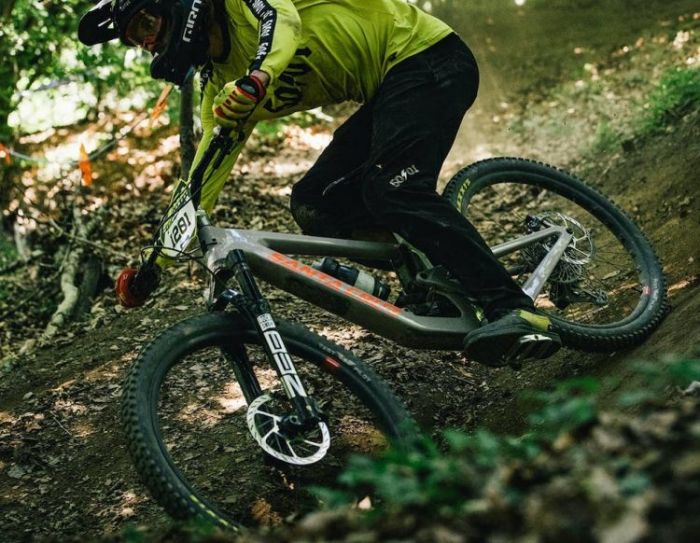Trek Procaliber 9.5
- Price: $2,449.99
- Frame: OCLV Mountain Carbon Fiber
- Tires: 29×2.20”
- Gears: 1×12
What we like about it: The carbon frame and 1×12 gearing combined with the great value price will make it your top choice.
What we don’t like about it: The lack of dropper and the design of the rear shock can be a little bumpy on aggressive trails.
Rating: (4.7/5)
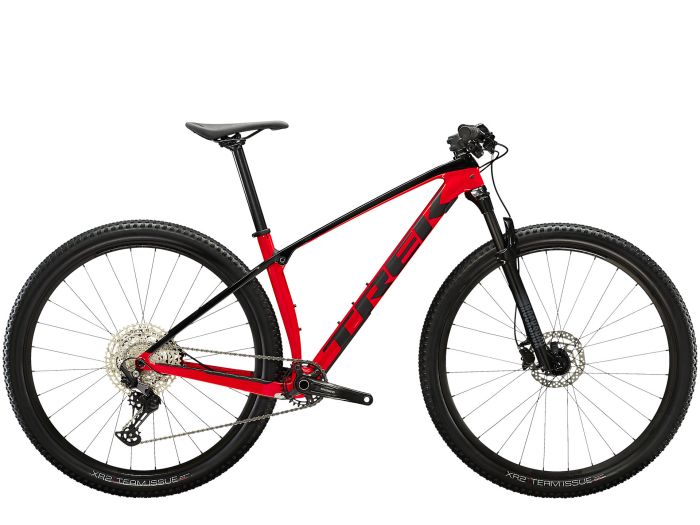
On the gravelly technical climbs, we wanted a light, hardtail bike with plenty of climbing power.
The Trek Procaliber 9.5 comes with a lightweight and sturdy carbon frame, smooth IsoSpeed, a premium RockShox Judy SL fork with Solo Air springs and TurnKey lockout, a wide-range Shimano Deore 1×12 drivetrain, and stable Shimano hydraulic disc brakes.
We were pleasantly surprised by the performance of the Trek Procaliber 9.5 on climbs similar to the infamous Banana Peel Slopestyle trail.
After a four-month-long review, the bike conquered rugged forest climbs, traversed undulating and bumpy gravel singletrack, and navigated smooth, loose trail descents. I experienced the bike’s potent climbing performance, and it struck me as an excellent climber. Yes, the Trek Procaliber 9.5 coped with mountain climbing so well that I found mountain climbing to be easy and enjoyable.
Here’s our breakdown of the Trek Procaliber 9.5 climbing performance, descending as well as general riding, key features, components and specs as well as other versions of the series.
If you want to learn more about the bike, keep checking back with us.
Climbing Performance
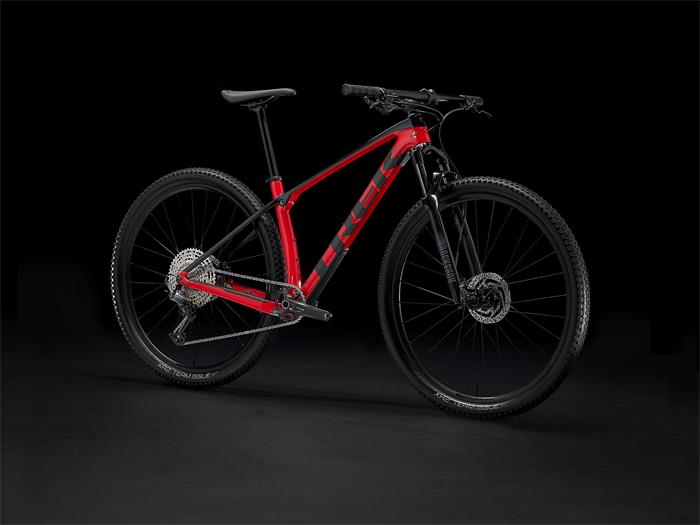
Indeed, hardtail bikes do climb well, but there are few in the same price range that can compare to the Trek Procaliber 9.5.
We can see that the Trek Procaliber 9.5’s frame material is OCLV carbon fiber, which makes it much lighter. The Bontrager XR2 29×2.20” based tires, along with the steep seat tube angle (73.8°) and 100mm RockShox Judy SL fork and smooth IsoSpeed decoupler, allow for smooth climbing even on bumpy, steep and rough terrain and unpredictable forest trails.
Plus, with the TrekProcaliber 9.5’s powerful Shimano hydraulic disc brakes, you won’t have to worry about failing to brake when faced with slippery trails or loose sand. And when it comes to emergency braking, it doesn’t sound harsh. While some people may think Shimano hydraulic disc brakes are expensive, if you look at the price of the Procaliber 9.5, I don’t think you’ll hesitate.
We noticed that the Trek Procaliber 9.5 doesn’t have a dropper design, so we were a little concerned about its damping before the field review. I overlooked the fact that its OCLV carbon frame has good shock absorption, so even on bumpier trails Procaliber 9.5 still allowed me to ride with a smile on my face. But it’s true that the lack of dropper design can still be a bit lacking when facing technically undulating speed trails.
All things considered, it seems that Trek Procaliber 9.5 climbs much better than the softtail at the same price point, and with really few carbon configurations at this price, I think I’d be happy to pay for it.
Descending
It’s a well-known fact that hardtail bikes aren’t great at descending, but in my real-world riding, a consistent descending is one of the Trek Procaliber 9.5’s strengths.
To review the Trek Procaliber 9.5’s descent, we went to Maple Ridge, NY. This is an up-and-coming mountain biking destination that now has many trails and more in development. This place has been visited by a lot of cyclists, but we didn’t come close enough to coincide with the lack of people, just a few faint cheers. We got some information from the ruts in the ground, and even though there are more trails in development, there is no shortage of riders coming here to experience the speed and excitement.
The descent we selected for this sightline reach includes a very steep drop and a bridge crossing. After all, the Trek Procaliber 9.5 is a hardtail bike, so if you were me, you’d be a little concerned, but Trek Procaliber 9.5 is surprisingly capable in this terrain.
With the Trek Procaliber 9.5’s 120tpi Bontrager XR2 Team Issue vacuum tires, Straight Shot downtube for smooth grip during descents, and an extra-rigid frame for protection in the face of rough terrain. You might argue that it doesn’t have the advantages of a full suspension, though I must also say that less experienced riders on such steep descents will encounter some hindrance with the Procaliber 9.5.
Although some will disagree, I will say that at $2,449.99 there are very few hardtail bikes with carbon frames. The Trek Procaliber 9.5 doesn’t ditch these distinctive components for the affordable price, whether in brakes or braking.
General Riding
If you’re looking for a hardtail bike for commuting or fitness riding, you might want to take a few minutes over a cup of coffee or in your free time to check out this review of ours. It may just give you the versatility you’re looking for in this bike.
As we mentioned earlier, Trek Procaliber 9.5 is a professional racer that is especially good at climbing. It also delivers a surprisingly good performance on descents where hardtails are difficult to resist, but I wouldn’t discount its versatility.
The Trek Procaliber 9.5’s 29×2.20” vacuum tires may not be as fast as a road bike with blade-like tires. It has the commuting ability you’d expect from a hardtail bike in its price range. It maintains speed even on bumpier roads, allowing you to control your time on your commute to and from work.
Plus, with 1×12 shifting, you can enjoy smooth shifting while maintaining your stamina on fitness rides. If you have enough shifting experience, you can also enjoy your cycling workout by shifting to the right speed gears on uphill or downhill.
The cost-effective Trek Procaliber 9.5, you’ll love it, won’t you? After all, just its carbon fiber frame already makes my eyes water.
Main Features
Frame
We found that essentially most hardtail bikes have a similar frame design. At first, when faced with the Trek Procaliber 9.5, we only found it to be a little more comfortable to ride and were unhappy that it was only available in one paint color (although I do like the classic red and black combination). But as soon as we started our climbing review, we marveled at its lightweight bodywork and near-perfect geometry.
First of all, as we’ve already mentioned, it only comes in one color, Radioactive Red, and although this classic color combination would go well with my red and black jersey, I still think the Trek Procaliber 9.5 would give us a few more paint color options. Next, we come to the main attraction of the Trek Procaliber 9.5, which is the frame material of the Trek Procaliber 9.5.
Based on the characteristics of carbon fiber, we know that it is a special material more expensive than aluminum than steel, and if you are careful enough, you will find that the Trek Procaliber 9.5 uses not ordinary carbon fiber, but OCLV mountain carbon fiber for mountain bikes. This is Trek’s mountain-specific carbon fiber, tougher carbon fiber with a unique material and layup procedure. In our review, we performed an impact test on the Procaliber 9.5 and found that it surprisingly won in terms of compression resistance. Seeing this we howled in rapture for Trek Procaliber 9.5.
Are you impressed?
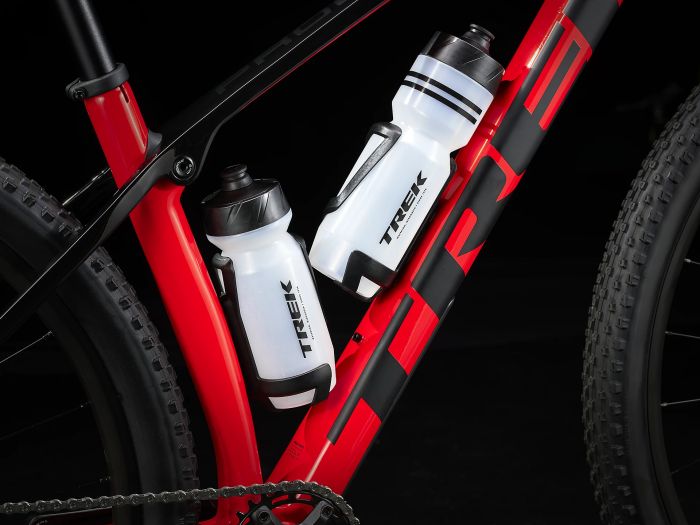
You may have been tempted, but you may have hesitated, even thinking that a regular carbon fiber bike is so expensive, let alone the Trek Procaliber 9.5, but the price of the Trek Procaliber 9.5 is less than $2500 on the official website, so check out the Procaliber 9.5 if you’re tempted.
In addition, we can see that the Trek Procaliber 9.5’s cable routing is all hidden inside the frame, which gives me a great sensory experience. After all, no one wants a bunch of cables on their bike. The two water bottle mounting holes on Trek Procaliber 9.5 also make me very happy. Who wouldn’t want to replenish enough water in time when riding to a longer distance or losing water?
Geometry
Obviously, this bike has a very classic geometry. the Trek Procaliber 9.5 has a steep enough head tube angle (68.8°) to climb technical singletrack effectively at low speeds and is loose enough that it won’t fly over the bars even when you’re facing a descent.
Then there’s its steep seat tube angle (73.8°), which will keep its seat tube forward, which allows you to keep riding upright. You can also bend over and ride in a more aerodynamic position to maintain lightning fast speeds if you’re facing a race and want to gain speed.
Also, we see that the Trek Procaliber 9.5 has the right length rear fork (43.2cm), which allows the rider to ride in a way that not only maintains agility but also doesn’t compromise its stability.
We also noticed that the Frame reach (M size 42cm) is the perfect length for me at 5’6”, allowing me to get on and off the bike easily.
No matter what kind of bike you want to get, the first thing to look at is the size, the right size will give you an unexpected riding experience.
Components and Specifications
Shimano Deore M6100 1×12 Drivetrain
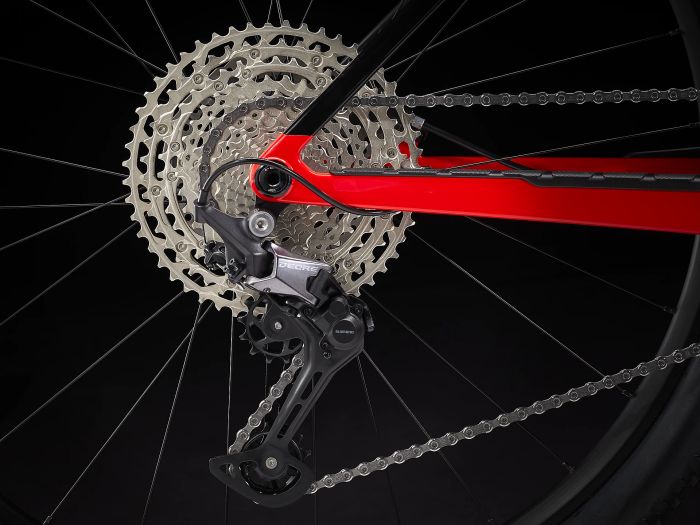
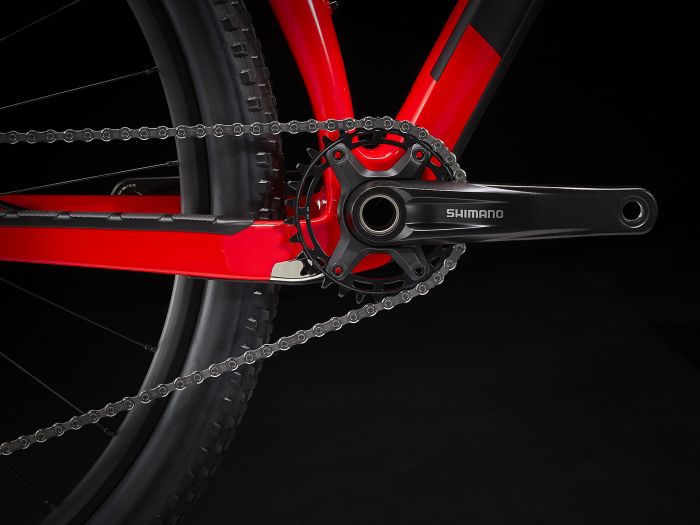
When we saw the Trek Procaliber 9.5 Shimano Deore M6100 1×12 drivetrain, my first thought was that such a wide range of gearing was what I wanted, but I was also concerned about the added weight of the flywheel. What I didn’t expect is that the new SHIMANO DEORE M6100 12-speed cassette flywheel takes into account the weight issue while increasing the gearing of each gear. Instead of increasing the gears, the engineers have achieved a lightweight design.
In addition, the 1× shifting is smoother than the 2× I used before, while the 10-51 sheer gear ratio allows you to shift to a large slice when facing uphill. The speed may be a little slow at this time, but it will save you enough effort. If you have enough experience, you can make the most suitable shift when facing different terrain, Trek Procaliber 9.5 supports your versatile riding.
If you want a wide range of drivetrains, why not try some Trek Procaliber 9.5?
Shimano MT200 Hydraulic Disc Brakes
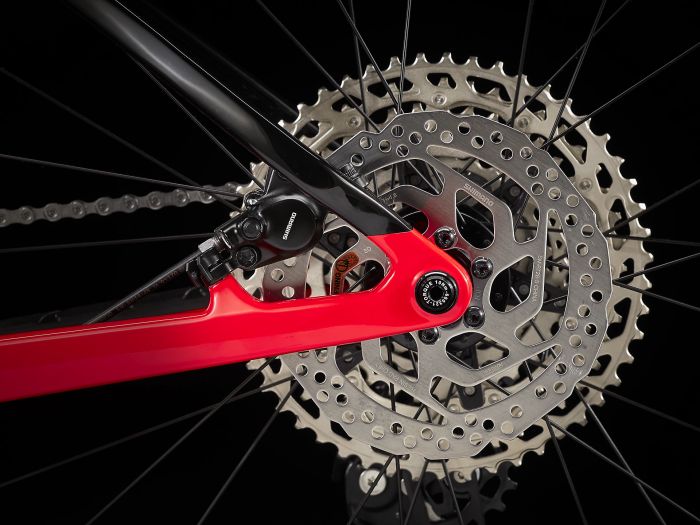
I’ve always valued braking on bikes, let alone the more professional racing Trek Procaliber 9.5. It was no surprise to me to see the Shimano MT200 hydraulic disc brakes on it. Hydraulic disc brakes are very popular on hardtails these days, and I was very impressed by how much lighter they are than mechanical discs.
The Shimano MT200 hydraulic disc brakes satisfied us, even in the muddy countryside after the rain, when we encountered an emergency situation that required braking, it was able to stop steadily.
Of course, the toughest thing we encountered was that Trek Procaliber 9.5 was a little stiff when stopping sharply in a turn, but it was not a big problem for me.
Tires
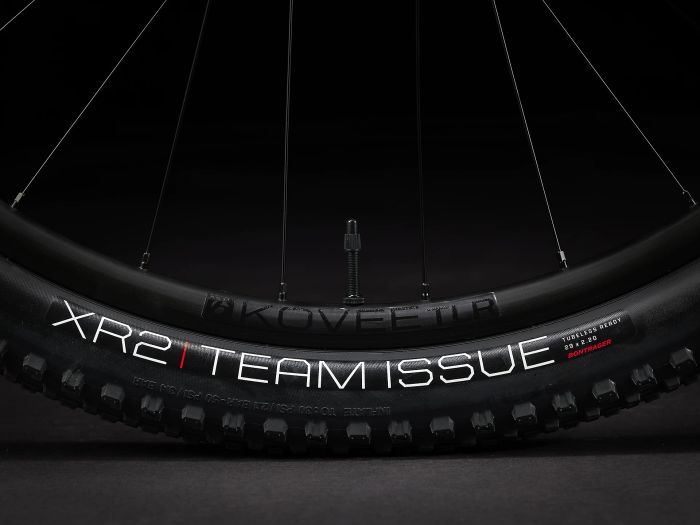
The Trek Procaliber 9.5’s 29×2.20” Bontrager XR2 tires are impressive enough for both steep climbs and flat roads.
The raised surface of the tires effectively shakes off any mud stuck on the tires, and the raised lugs also provide grip on steep and bumpy terrain.
Not only that, the Bontrager XR2 has a tubeless design with a special compound. This allows for lightweight construction that not only improves cornering traction but also allows for low rolling resistance, which allows for an even better riding experience.
In my riding experience, I found that the Bontrager XR2’s tires allowed me to spend less than 20 minutes or so on a ride that would have taken me half an hour. Because of the low rolling resistance design, I was smiling the entire time I was riding.
It’s worth mentioning that some may think the Bontrager XR2 tires won’t perform as well on the road. Riding the Trek Procaliber 9.5 120tpi vacuum tires on the road will amaze you with its rolling speed, because in addition to having better passing power, the 29er’s tires are great at maintaining speed.
RockShox Front Fork
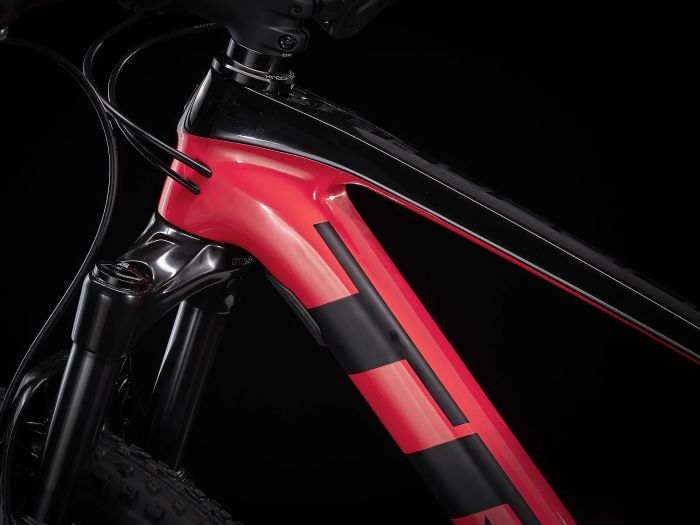
We didn’t feel any significant vibration on bumpy rides, thanks to the RockShox fork. But at first I thought the 100mm RockShox fork was low grade and that it wouldn’t cushion and dampen as well. The truth is that even with 100mm of fork travel, it gives me the cushioning I need. The maximum compatible fork is 120mm and in addition to the Solo air spring, it is light enough. With the correct air pressure setting it has enough cushioning, which gives me more confidence in my riding.
Bontrager Verse Comp Bicycle Saddle
If you take your saddle seriously enough, you’ll notice the difference in the Trek Procaliber 9.5 Bontrager Verse Comp bike saddle.
The Bontrager Verse Comp bike saddle is empty in the middle. It features a full saddle cutout for a lightweight and durable construction, and the design is suitable for cyclists of all genders.
In addition, the full saddle cutout minimizes soft tissue stress, providing lasting comfort even on long rides.
Not only that, but the Comp grade trim is optimized for foam padding, which gives you plenty of support while staying soft and adding lightness and comfort.
When I’m trail riding, I can maintain a comfortable riding position in the saddle because its saddle design provides targeted support and pressure relief to keep me smiling no matter what kind of terrain I’m in.
IsoSpeed Decoupler
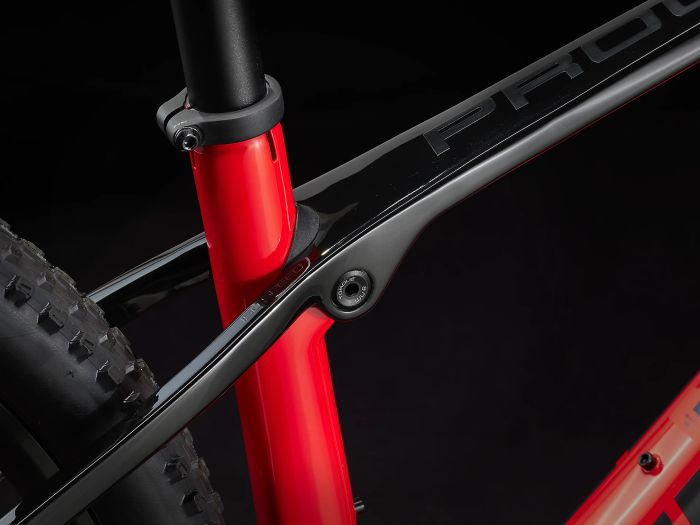
Some may ask what IsoSpeed is; IsoSpeed is a decoupling mechanism that separates the seat tube from the top tube, allowing for more flexibility in the seat tube without moving parts or shocks.
It is advantageous in the face of small bumps and trail chatter, allowing you to maintain your stamina longer while still not giving up any pedaling efficiency.
In actual riding, I feel it makes it easier for me to get to farther places.
Previous Versions Trek procaliber 9.5
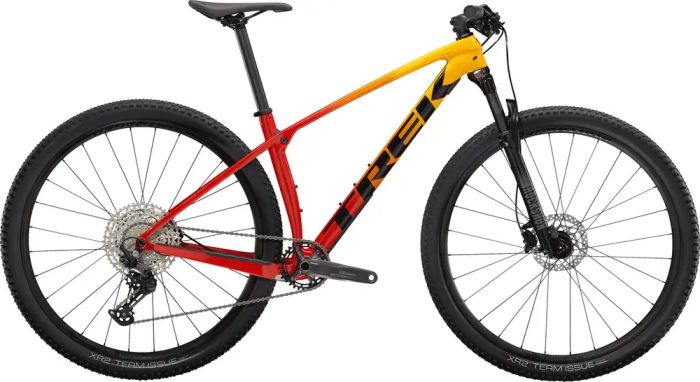
In this review we have the Trek Procaliber 9.5, a bike made of OCLV carbon fiber, RockShox forks, Shimano MT200 hydraulic disc brakes, and Shimano Deore M6100 1×12 drivetrain.
I call the Trek Procaliber 9.5 a lightweight climber. In my opinion, there’s nothing to complain about relative to its component upgrades, and I consider it a cost-effective pro racer.
But in the Trek procaliber 9.5 series in addition to the latest version, there is also a 2021 version. 2022 version paint color is also very design, 1 × 12 transmission is also very attractive.
What do we like about it?
- The OCLV carbon fiber material is lighter.
- The 1×12 drivetrain has more shifting options in the face of different riding situations.
- Bontrager Verse Comp bike seat has a more comfortable riding experience.
- Shimano MT200 hydraulic disc brake is lighter.
- IsoSpeed decoupler is more responsive in the face of small bumps.
What we don’t like about it?
- Some people may find the single paint color a bit lacking.
- The geometry is moderate in design.
FAQs
- What is the frame material of Trek Procaliber 9.5?
The frame material of Trek Procaliber 9.5 is OCLV carbon fiber.
- How many water bottles can the Trek Procaliber 9.5 carry?
Trek Procaliber 9.5 can carry 2 water bottles.
- What is the tire size of Trek Procaliber 9.5?
The tire size of the Trek Procaliber 9.5 is 29×2.20”.
Trek Procaliber 9.5 Specs
Frameset
| Frame | OCLV Mountain Carbon, IsoSpeed, tapered head tube, Knock Block, internal control routing, balanced post mount brake, Boost148 |
| Fork | RockShox Judy SL, Solo Air spring, TurnKey lockout, tapered steerer, Boost110, 15mm Maxle Stealth, 100mm travel |
| Max compatible fork travel | 120mm (533 axle-to-crown) |
Wheels
| Wheel front | Bontrager Kovee TLR rim/DC-611 Boost hub, 29”, 28H, 15 Gauge Spokes, Black/Black |
| Wheel rear | Bontrager Kovee TLR rim/MST148A Boost hub, 29”, 28H, 15 Gauge Spokes, Micro Spline Freehub, Black rim graphics, spokes, and nipples |
| Hub front | Bontrager alloy, sealed bearing, alloy axle, 6-bolt, Boost110, 15mm thru axle |
| Hub rear | Bontrager alloy, sealed bearing, 6-bolt, Shimano MicroSpline freehub, Boost148, 12mm thru axle |
| Skewer rear | Bontrager Switch thru axle, removable lever |
| Rim | Bontrager Kovee, double-wall, Tubeless Ready, 28-hole, 23mm width, presta valve |
| Tire | Bontrager XR2 Team Issue, Tubeless Ready, Inner Strength sidewall, aramid bead, 120 tpi, 29×2.20” |
| Tire part | Bontrager TLR sealant, 6oz |
| Rim strip | Bontrager TLR |
| Max tire size | Frame: 29×2.40″ Fork: See manufacturer |
Drivetrain
| Shifter | Shimano Deore M6100, 12 speed |
| Rear derailleur | Shimano Deore M6100, long cage |
| *Crank | Size: S, M Shimano MT511, 30T steel ring, 52mm chainline, 170mm length Size: M/L, L, XL Shimano MT511, 30T steel ring, 52mm chainline, 175mm length |
| Bottom bracket | Shimano MT500, 92mm, PressFit |
| Cassette | Shimano Deore M6100, 10-51, 12 speed |
| Chain | Shimano Deore M6100, 12 speed |
| Max chainring size | 36T, Min 30T |
Components
| *Saddle | Size: S, M, M/L, L, XL Bontrager Arvada, steel rails, 138mm width Size: S, M, M/L, L, XL Bontrager P3 Verse Comp, steel rails, 145mm width |
| *Seatpost | Size: S Bontrager alloy, 31.6mm, 12mm offset, 330mm length Size: M Bontrager alloy, 31.6mm, 12mm offset, 360mm length Size: M/L, L, XL Bontrager alloy, 31.6mm, 12mm offset, 400mm length |
| *Handlebar | Size: S, M, M/L Bontrager Comp, alloy, 31.8mm, 5mm rise, 720mm width Size: L, XL Bontrager Rhythm Comp, alloy, 31.8mm, 15mm rise, 750mm width |
| Grips | Bontrager XR Trail Comp, nylon lock-on |
| *Stem | Size: S Bontrager Rhythm Comp, 31.8mm, Knock Block, 0 degree, 60mm length Size: M, M/L Bontrager Rhythm Comp, 31.8mm, Knock Block, 0 degree, 70mm length Size: L, XL Bontrager Rhythm Comp, 31.8mm, Knock Block, 0 degree, 80mm length |
| Headset | Knock Block Integrated, 62-degree radius, cartridge bearing, 1-1/8” top, 1.5” bottom |
| Brake | Shimano MT200 hydraulic disc |
| *Brake rotor | Size: S, M, M/L, L, XL Shimano RT26, 6-bolt,160mm Size: L, XL Shimano RT26, 6-bolt,180mm |
| Brake Set | Shimano MT200 hydraulic disc |
Weight
| Weight | M – 11.88 kg / 26.21 lbs (with TLR sealant, no tubes) |
| Weight limit | This bike has a maximum total weight limit (combined weight of bicycle, rider, and cargo) of 300 pounds (136 kg). |
Comparison Table
| BIKE | PRICE | DRIVETRAIN | BRAKE | TIRE | CLICK VIEW |
| Bulls Bushmaster RS | $2,185.09 | 1×12 | SHIMANO MT410 Hydraulic Disc | 29’’ | Click View |
| Scott Scale 940 | $2,299.99 | 1×12 | Shimano Disc Brakes | 29×2.25″ | Click View |
| ROCKRIDER Mountain Bike Race 740 NX/GX Eagle | $1,914 | 1×11 | Sram Level T Disc Brakes | 29×2.25″ | Click View |
| Ridley Ignite SLX – Shimano SLX 1x12sp | $2,478 | 1×12 | Shimano SLX M7100 Disc Brakes | 29’’ | Click View |
Trek Procaliber 9.5 vs Bulls Bushmaster RS
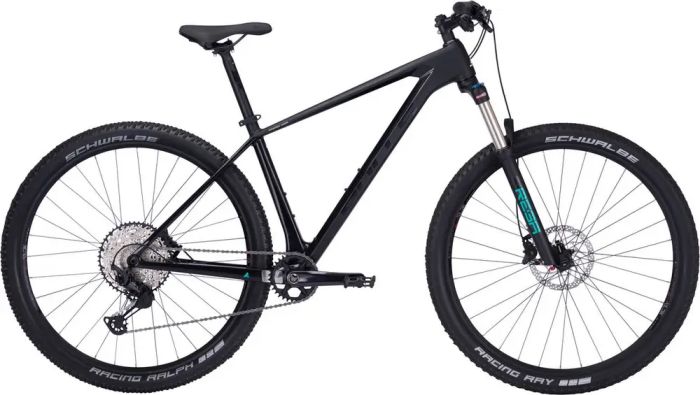
Both bikes are made of carbon fiber and both were developed by their respective professional team members. If you were to ask me to compare the lengths, I would have a hard time deciding.
In addition, both are 1×12 gears and both have 10-51 gear ratios, with the Bulls Bushmaster RS being a step up from the SHIMANO Deore XT 1×12 in terms of actual numbers. But I’m actually riding, Trek Procaliber 9.5 its gearing does not feel anywhere out of place to me. The smooth and light shifting made me reluctant to get off the bike.
In fact, the solid black paint color of the Bulls Bushmaster RS didn’t make me like it that much. The Radioactive Red of the Trek Procaliber 9.5 would be more appealing to me by comparison.
If you like more flashy colors, you can check out the Trek Procaliber 9.5 and it will catch your eye.
Trek Procaliber 9.5 vs Scott Scale 940
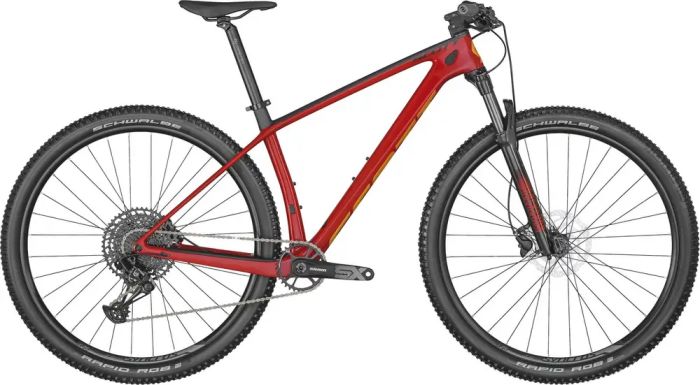
The two bikes are actually similar in configuration, but I found the Scott Scale 940 to be 1.13Ibs heavier than the Trek Procaliber 9.5. The Scott Scale 940 uses SRAM NX Eagle 12-speed transmission.
The Shimano Deore M6100 1×12 on the Trek Procaliber 9.5 was also very smooth and easy to shift on my actual ride, and with a lighter body, it was much easier for me to operate. Not only that, but the Shimano MT200 hydraulic disc brakes maintain stable braking in all conditions, even in the rain.
If you want a lighter bike, you can try the Procaliber 9.5.
Learn More: Scott Scale 940 Be A Good Cost Performance Hardtail Bicycle? [Review]
Trek Procaliber 9.5 vs ROCKRIDER Mountain Bike Race 740 NX/GX Eagle
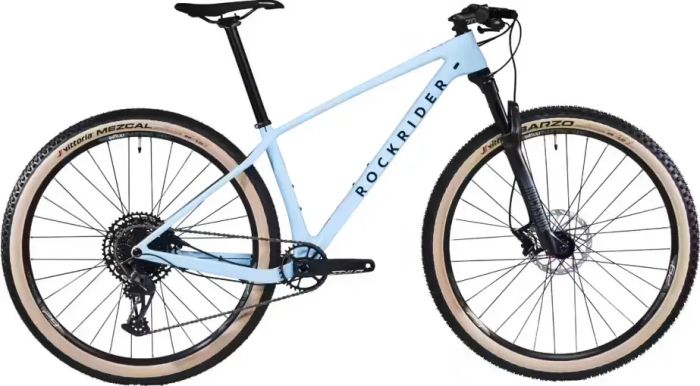
I have to say, the ROCKRIDER Mountain Bike Race 740 NX/GX Eagle is a great bike for under $2,000, both in terms of braking and 1×11 shifting, and its component configuration is excellent. With a full body of carbon fiber and only 25.4Ibs, this lightweight body really appeals to me.
But I still prefer the carbon fiber of the Trek Procaliber 9.5’s OCLV, which gives it more stiffness, and its 1×12 shifting also catches my attention as well.
The Knock Block protects your frame and prevents your handlebars from spinning all the way around in a crash. Your hoses won’t be pulled hard, keeping your controls from hitting the top tube.
If you want a bike, in addition to price being something you have to consider, you also have to think about whether it meets your real needs.
Learn more : Is Decathlon Rockrider E-ST 100 Worth Buying? – [Decathlon Rockrider E-ST 100 Review]
Trek Procaliber 9.5 vs Ridley Ignite SLX – Shimano SLX 1×12
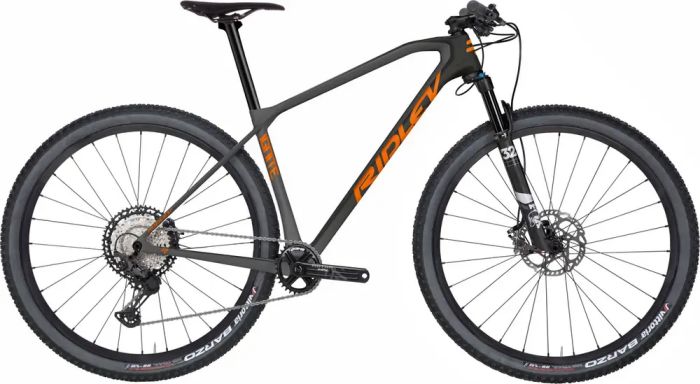
The Trek Procaliber 9.5 and the Ridley Ignite SLX – Shimano SLX 1x12sp are two bikes that have very little difference in price.
The Ridley Ignite SLX – Shimano SLX 1x12sp features an extremely clever carbon fiber laminate, which is key to achieving amazing riding characteristics. We also have to say that the Trek Procaliber 9.5’s OCLV’s carbon frame is outstanding both in terms of lightness and cushioning it delivers.
If I had to choose, I think the Trek Procaliber 9.5 gives me a more comfortable ride. Also the IsoSpeed setup eliminates the little bumps and trail chatter from body hopping so you can stay on the bike longer without losing any pedaling efficiency.
For a bike that doesn’t lose pedaling efficiency, try the Trek Procaliber 9.5.
In case, the above comments are helpful to you, please remember to share the subscription. Have a great day!

![[Orbea URRUN 10 20mph Review] – Best Used By People Who Enjoy Riding To Get AFeel For The Mountains!](https://bestbikeselect.com/wp-content/uploads/2023/09/2023-Orbea-URRUN-10-20mph-35_-1024x1024.jpg)
![[Specialized Turbo Como 5.0 Review] – Good Choice?](https://bestbikeselect.com/wp-content/uploads/2023/08/2023-Specialized-Turbo-Como-5.01_-1024x1024.webp)
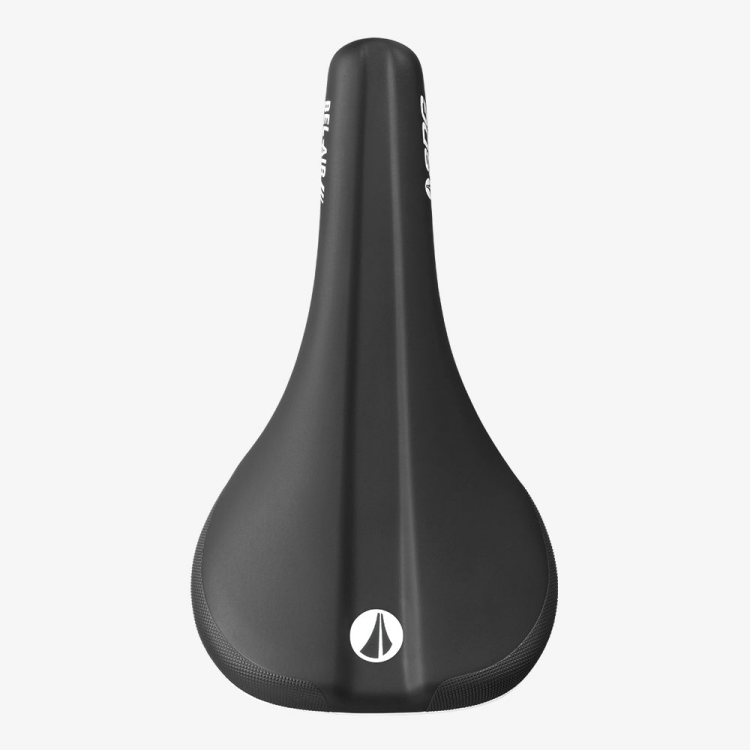
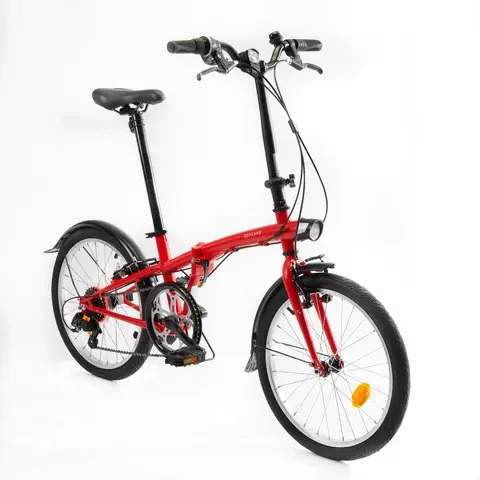
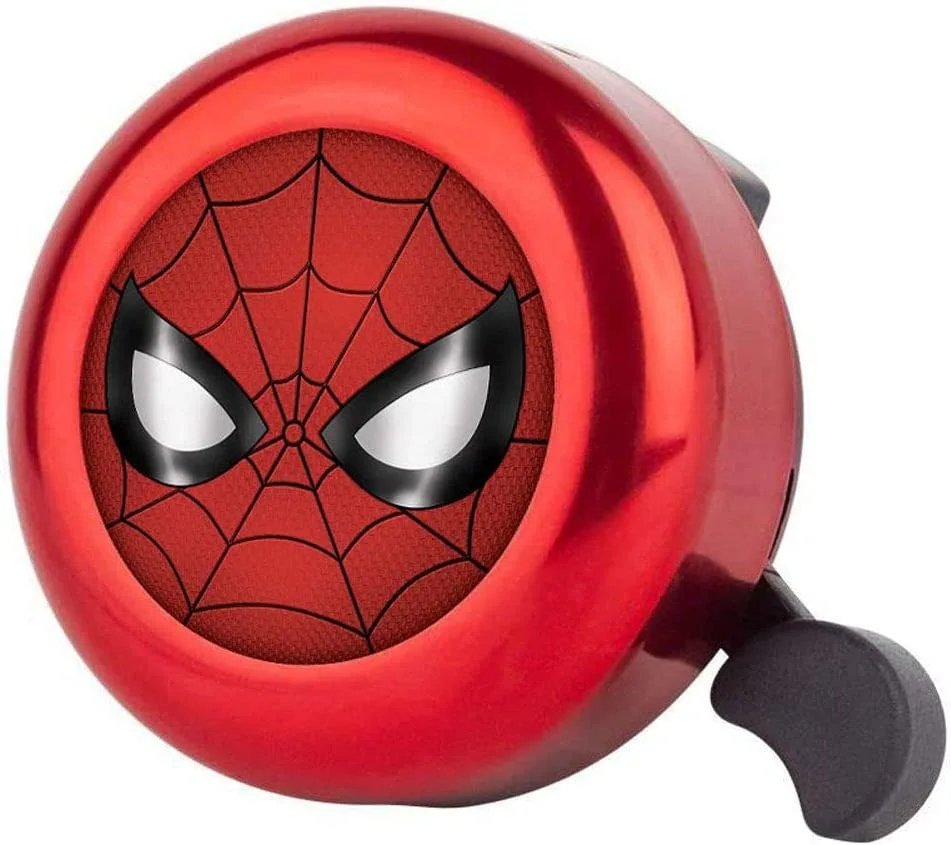
![2025 Built for Champions:[Orbea ORCA M21eTEAM PWR Review]](https://bestbikeselect.com/wp-content/uploads/2025/01/ORCA-M21eTEAM-PWR-1024x885.jpg)
![2025 Conquer Any Trail [Santa Cruz Bronson R Review]](https://bestbikeselect.com/wp-content/uploads/2025/01/Santa-Cruz-Bronson-R-1-1024x768.webp)
![2025 The All-Terrain Beast [Santa Cruz Hightower 3 MY24 Review]](https://bestbikeselect.com/wp-content/uploads/2025/01/Santa-Cruz-Hightower-3-MY24-1024x768.webp)
![The Best Comfortable Leisure Bike of 2025 [ Trek Verve 2 Lowstep Gen 5 ]](https://bestbikeselect.com/wp-content/uploads/2024/12/Verve-2-Lowstep-Gen-5-02-1024x681.png)
![2025’s Top Endurance Bikes [Cannondale Synapse Carbon 3 L Review]](https://bestbikeselect.com/wp-content/uploads/2025/01/Cannondale-Synapse-Carbon-3-L-1-1024x627.webp)
